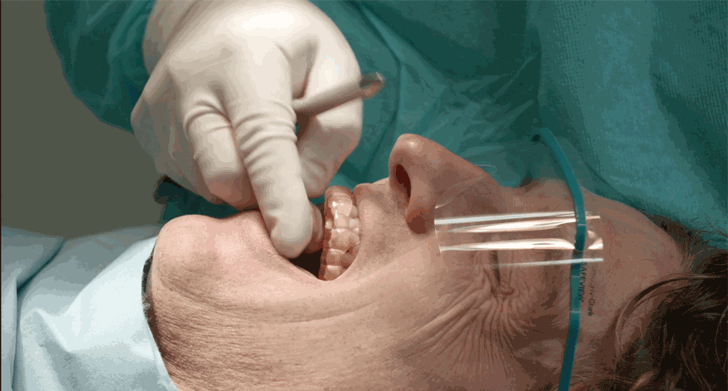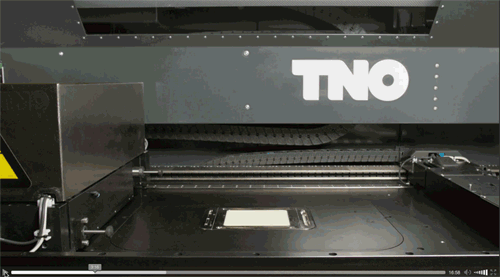How better to demonstrate confidence in your own product that to use it yourself? This is how Rik Jacobs, CEO of Vertex-Dental B.V./NextDent B.V., sought to demonstrate the power of NextDent’s dental CE certified and bio-compatible 3D printing materials when he had a dental procedure to become the first person to receive a 3D printed Micro Filled Hybrid crown. At the Vertex-Dental/NextDent “3D printing in Dental, a Game Changer” conference today, the CEO opened his mouth to reveal to audiences the 3D printed MFH crown fitted perfectly to his mouth.
As a means of demonstrating that the dental industry is ready for the implementation of 3D printing into the daily dental workflow, Jacobs underwent the procedure performed by Professor Daniel Wismeijer, Professor of Oral Implantology and Prosthetic Dentistry at the ACTA (Academic Centre for Dentistry Amsterdam). This film, presented at the event, details the entire process of the crown’s creation and its implantation.
It begins with a 3D scan of Jacobs’s teeth, which are then 3D printed in resin, before an implant screw is fitted into the print and inserted into Jacobs’s mouth.
With the screw inserted more efficiently and with improved comfort, thanks to the printed model, the video shows the 3D printing of the actual crown from NextDent’s dental CE certified and bio-compatible MFH material, available in a variety of colors, on a machine from Dutch research institute TNO.
The crown, a perfect replica of the CEO’s original tooth, is also installed quickly and with greater comfort, as 3D printing has enabled a patient-tailored solution, reducing issues with fit and proper insertion. And, because of the material used, the tooth matches the rest of his teeth aesthetically, as well.
In a press release, Jacobs declares triumphantly, “I am very proud that we can now show the world that the printing of a (permanent) crown on a root implant has become a reality! The crown fits perfectly, because it has been printed to an accuracy on a μm scale.” Prof. Daniel Wismeijer adds, “It is amazing how efficient the 3D printing technique is. Normally, patients need to undergo various treatments, but with the use of the 3D digital workflow, this can be reduced significantly.”
This illustrative case study is not just meant as a stunt, involving a CEO undergoing a fun dental procedure, but as a demonstration of the new digital workflow possible in the field of dentistry. Jacobs elaborates, “A new infrastructure has been developed. As the scanners, software, materials, hardware (printers) and the correct tools for post-processing / finishing of the workpieces have undergone (completed) technical development, we are convinced that 3D printing for dental applications is about to take off. Our conviction is supported by a recent publication by SmarTech Markets Publishing, which states that the global Dental 3D printing market will expand from $1 billion US to more than 3 billion US $ over the next 5 years. This is not surprising; 3D printing offers significant benefits that will allow dental professionals to work more quickly, more accurately and more sustainably. The end result is improved dental care for the patient.”
In some ways, medicine and dentistry will be the first to be able to illustrate the emerging mixed reality ecosystem because these fields already implement high-quality 3D scanning on a regular basis. In the case of dentistry, 3D scanning is performed, followed by digital design with dental software, 3D printing with biocompatible materials and dental printers, and finalized with post-production and finishing. Tying those together represents the future of 3D computing, in which digital data and the physical world are more seamlessly integrated. And, in the case of the medical and dental professions, represents a completely new, more efficient way to perform critical operations with greater predictability and accuracy. Maybe, now that the CEO has had his own 3D printed crown installed, the rest of us will be able to benefit from the technology as well.







